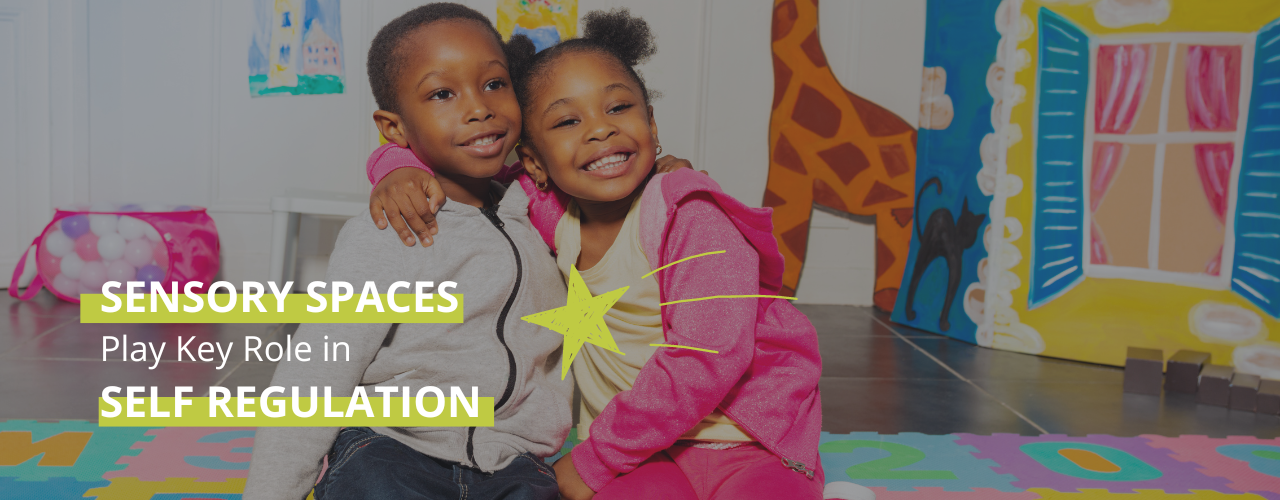Sensory Spaces Play Key Role in Self Regulation

Therapeutic rooms provide spaces for self-exploration, regulation and positive change for individuals with developmental disabilities.
What is a sensory room?
A sensory room is a therapeutic space that can provide support for a variety of special needs including vision difficulties, language difficulties, learning disabilities, emotional disturbances and any student who needs a safe, quiet room to calm their body and better be able to self-regulate.
For occupational therapy, being able to create a multi-sensory environment in home, clinic, hospital or school can be an ideal way to continue the benefits that occur during occupational therapy outside of the OT’s office.
Why are sensory rooms important for occupational therapy?
Sensory rooms can provide support and solutions for a wide range of individuals. Children with multiple disabilities often have sensory impairments. Sensory rooms allow for a dedicated, flexible space with special equipment designed to promote interaction and relaxation while also stimulating senses.
Sensory rooms provide a variety of benefits for children, especially children with disabilities. Here’s a list of just some of the benefits of sensory rooms:
- Calming Effects: White noise machines, aromatherapy diffusers or a variety of other soothing items that are designed to help individuals calm and regain control of their emotions.
- Stimulation: A sensory space may contain specially designed toys or items that encourage engagement and appeal to sensory seekers. These toys help individuals become more aware of their senses and explore sensory experiences in a safe environment.
- Socialization: Sensory rooms offer a space where individuals can safely explore by themselves but also provide a safe, stress-free space that allows children to move and explore together.
- Improved Focus: Individuals with developmental disorders are often distracted and struggle to pay attention. Sensory rooms can help individuals increase awareness of their surroundings and learn to cope with real-life situations where concentration is required.
- Sensory-Motor Skills Development: Muscle movement and balance can be challenging for individuals with sensory processing disorders. Sensory rooms provide a safe space for practicing fine motor skills and movement.
- Cognitive Development: Sensory rooms can be an instrumental tool to teach individuals how to process experiences and cope in situations where their reactions might otherwise become extreme. It’s also a great way to help individuals with sensory disorders to explore cause and effect as they learn about how their actions influence the world around them.
- Sensory Development: A sensory space creates a safe, stress-free environment for individuals to explore the brain’s complex reactions to things they touch or hear, sensory-motor skills and balance as well as their muscle functions.
What are the components of a sensory room?
There is not one design that fits all when it comes to sensory rooms. While many rooms start with white or pastel walls to optimize light projection, sensory rooms have varying appearances and equipment depending on the needs of the children or client group.
Some of the equipment you may find in a sensory room include:
- Projectors: help display detailed images, animated abstracts and any other sensory information
- Bubble tubes: offer auditory, visual and tactile sensations
- Music systems: provide stimulation while helping to manage the level of arousal
- Fiber optics sprays: provide tactile and visual stimulation through long color-changing strands that the client can hold
- Aromatherapy diffusers: fill the air with fragrance
- Ball pools: support proprioceptive input
- Waterbeds: can enhance feelings of calmness or provide stimulation
- Positioning furniture: allow clients to change positions to enhance relaxation
- Mirror ball and pin spotlight: sensory input for projecting moving shapes across the room
- Switches: give clients control over the sensations in the room
Sensory room for better special needs care
Sensory rooms are important, dedicated spaces that provide sensory stimulation in a controlled, safe space for individuals with learning difficulties, developmental disabilities or impairments. Sensory rooms, when used in conjunction with occupational therapy can help to amplify and extend the progress made during in-person therapy. Our goal is to create sensory rooms onsight for our partners in Jamaica AND to help you create sensory spaces in your home, work, classroom, clinics, etc. to better serve our children.
Support sensory needs
We believe every child with special needs in the Caribbean can have a bright future when given the support they need. Through resources such as sensory rooms, we can provide therapy services to neurodiverse children in areas where access to such support is not widely available.
Learn more about how we are working to create sensory rooms for special needs children in the Caribbean and join us by making a donation to fund the equipment, tools and staffing necessary to create sensory room spaces

